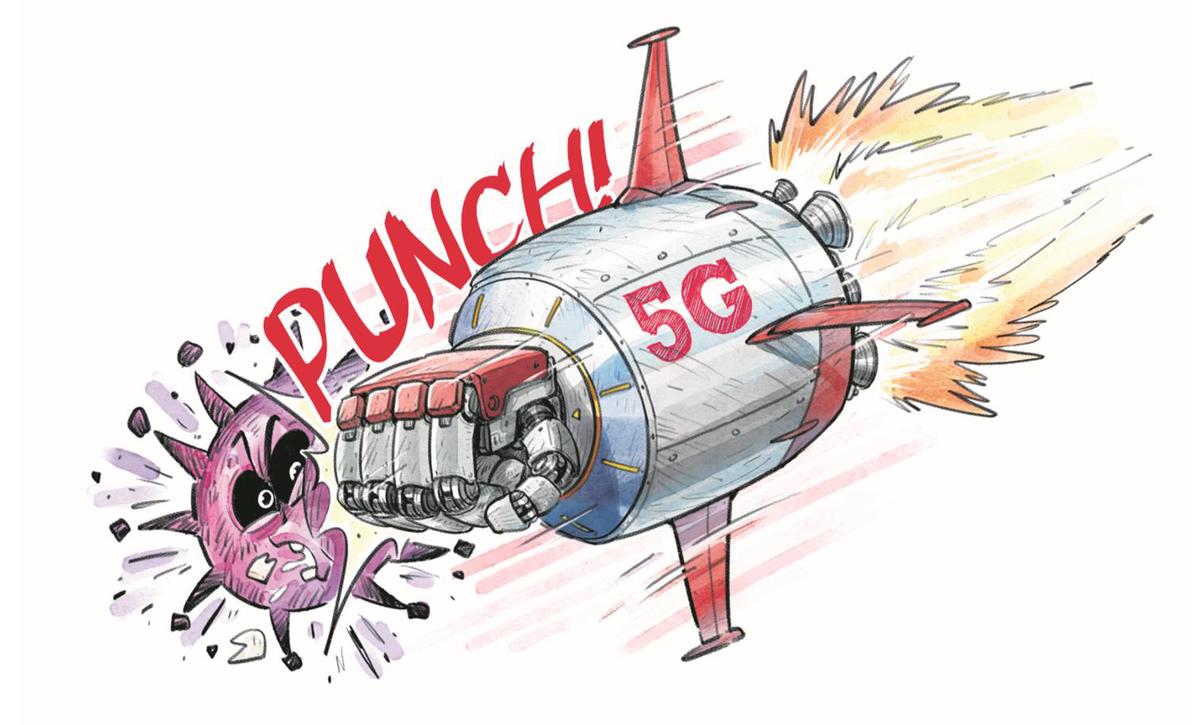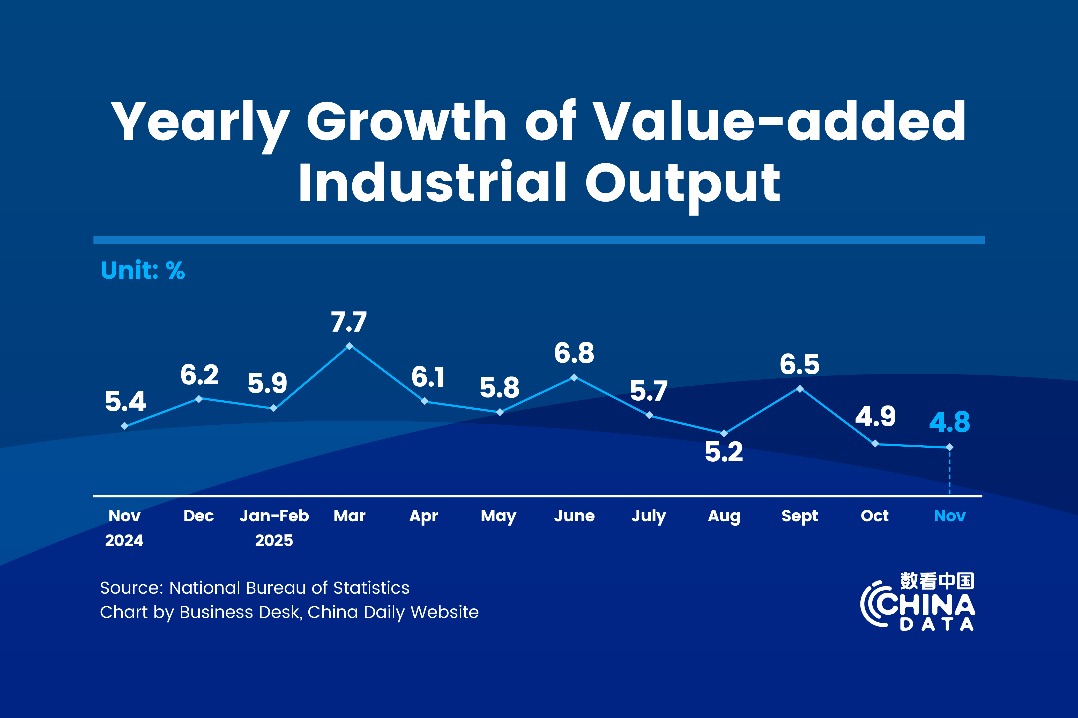Future opens up on 5G's stellar role in virus fight


Several relatively new technologies have been making a huge difference to China's fight against COVID-19. The newly commercialized 5G technology in particular has played a stellar role in healthcare, education, media and other fields.
Amid the novel coronavirus outbreak, 5G operators, equipment manufacturers and industrial application solution providers have worked hand in hand to prevent the spread of COVID-19 through a dozen cutting-edge applications.
In terms of remote healthcare services, Beijing Jincheng Medical Technology Co Ltd, for instance, has provided some hospitals in Wuhan, capital of Hubei province and the former epicenter of the epidemic, with a CT and X-ray coordination solution based on 5G cloud collaboration. The solution has enabled doctors outside the Hubei province to help identify CT and other images, so as to address the shortage of radiologists in Wuhan and thus boost the efficiency in screening suspected cases of COVID-19.
When it comes to 5G-powered remote education, Zhumadian Branch of China Mobile, for instance, gives full play to the advantages of 5G networks. It has provided 5G-powered software platforms and training services free of charge. Using such platforms, cityand county-level primary and secondary schools are able to organize their teachers and students to "teach and learn from home".
5G networks feature larger bandwidth, higher rate, lower latency and wider connection compared with 4G grids and can support three scenarios of enhanced mobile broadband, reliable low latency and massive connections. A deep integration of 5G into economic and social sectors will breed emerging information products and services, and assist in COVID-19 prevention and control in the following three aspects:
Media, healthcare, education
A string of 5G applications will empower healthcare, news media and remote education.
In the healthcare realm, 5G 4K/8K high-definition online consultation services make excellent expert resources available at the grassroots level, improving the ability of grassroots and community-based medical organizations to cope with the outbreak and reduce the risk of cross-region people-to-people spread. 5G-enabled robots can deliver drugs, check temperature, offer medical advice, guide routes, clean and disinfect rooms, which can improve ward isolation management. Online consultation for some common and chronic diseases and drug distribution will reduce the risk of cross infection among other patients during offline visits to hospitals.
In the news media sphere, wireless transmission is not limited by space. So, 5G can enable all-day livestreaming as well as production and distribution of high-definition video footage on the cloud, so that people all over the country who keep an eye on the developments of the epidemic, can be kept updated.
Moreover, 5G can also help deliver immersive class experience amid the epidemic. Through high-definition screens, virtual reality, augmented reality and holography goggles, students can feel as if their teachers were present in person. In addition, live videos can be transmitted to more schools, especially those in remote and border areas, and excellent teaching resources will be available wherever 5G networks can reach.
Smart factories, automation
5G intelligent factories and autopilot systems will increase the efficiency of material production and transportation
Amid the epidemic, factories can hardly go into operation as scheduled. Given its ultra-low latency, 5G can enhance intelligent manufacturing in factories with accurate remote control of equipment and other means, thereby sparing operators from entering danger zones.
The superfast technology can also help obtain real-time information on driving conditions of vehicles a few hundred kilometers away and the surrounding traffic environment. It can enable self-driving vehicles and satisfy the demand for remote manual intervention in case of autopilot failures. In long-distance transportation, 5G-enabled vehicle fleets will "talk" to each other and support synchronous operations such as acceleration and braking, in which case nearly no drivers will be needed for the following vehicles as long as the lead vehicle driver drives carefully, thus appropriately reducing the number of drivers required.
Surveillance, patrol
Diversified 5G terminals will bring about new means of epidemic surveillance and patrol in public places.
In densely populated places such as hotels and restaurants, shopping malls, and public transport stations, 5G infrared thermal imaging temperature measurement can detect body temperatures at a distance of 10 meters, identify abnormal individuals in time and support contactless temperature-based prescreening.
Also, 5G-powered drones can transmit real-time high-definition images and support remote low-latency control. Such features will enrich how drones are used. 5G-connected unmanned aerial vehicles equipped with a thermal imaging system can conduct aerial real-time monitoring of densely populated open spaces. Drones equipped with voice broadcast systems can carry out aerial patrols and broadcasting and warn people around to take precautions if suspected cases are detected. Plant protection UAVs can spray community roads, cultural squares, recreational facilities and rural areas with disinfectants to increase the efficiency of disinfection.
In the fight against COVID-19, 5G has begun to show its utility in healthcare, new media and remote education. Epidemic prevention and control will bring about explosive growth of telecommuting, distance education and other applications, most of which are currently based on 4G and cable networks, indicating problems such as limited bandwidth and latency, and lack of flexibility in network deployment.
When combined with the cloud, 5G can also support storage and transmission of mass data images such as VR/AR images and holograms, creating superior service experiences and reducing terminal costs by placing some of the storage and computing capacity of intelligent terminals onto the cloud.
Meanwhile, the outbreak acts as a transient catalyst for the development of 5G applications. After the COVID-19 outbreak, applications such as 5G tele-consultation and 5G intelligent medical and nursing robots have evolved from the experimental stage to clinical use and been practically applied to a number of hospitals. The epidemic also provides a rare test bed for remote work and distance learning applications. These will speed up the maturation of some 5G applications. Looking forward, 5G will be more extensively applied to life, production and social governance along with the gradual perfection of 5G networks and the deepening of innovative practice of 5G applications.
The writers are from the Research Center for Radio Management, which is part of the China Academy of Information and Communications Technology in Beijing. The CAICT is a scientific research institute under the Ministry of Industry and Information Technology of China.




































